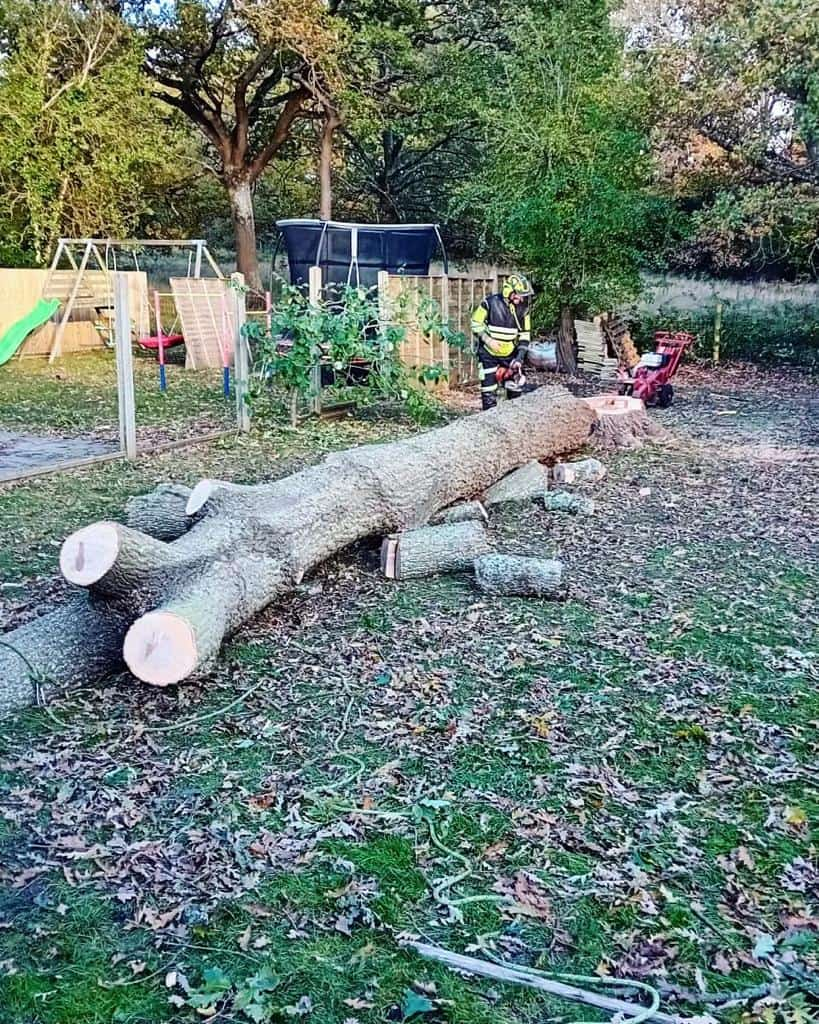Introduction: Pruning fruit trees is essential for ensuring healthy growth, preventing disease, and maximising yield. At LM Tree Surgery Fareham, we understand that proper pruning can significantly improve the quality and quantity of your fruit harvest. In this blog post, we will guide you through the steps and techniques needed to prune your fruit trees effectively, helping you achieve better yields year after year.
Understanding the Importance of Pruning
Pruning is selectively removing certain tree parts, such as branches, buds, or roots. When done correctly, it can:
- Promote Healthy Growth: Removing dead or diseased wood helps the tree allocate resources to healthy parts, promoting overall vitality.
- Improve Air Circulation and Sunlight Penetration: Pruning opens up the canopy, allowing more light and air to reach the inner branches, reducing the risk of fungal diseases and encouraging fruit development.
- Shape the Tree: Proper pruning helps maintain a desirable shape, making it easier to harvest fruit and manage the tree.
- Increase Yield: Pruning can enhance fruit size, quality, and overall yield by managing the tree’s energy.
When to Prune Fruit Trees
The timing of pruning is crucial for the health and productivity of your fruit trees. The best time to prune most fruit trees is during the dormant season, typically in late winter or early spring, before the new growth starts. This timing allows the tree to heal quickly and start the growing season strong. However, summer pruning can also be beneficial for controlling vigorous growth and encouraging the development of fruit buds.
Tools You Will Need
Before you begin, make sure you have the right tools for the job:
- Secateurs: For cutting small branches and twigs.
- Loppers: For thicker branches that are too large for secateurs.
- Pruning Saw: For cutting larger branches.
- Gloves: To protect your hands from thorns and rough bark.
- Disinfectant: To clean your tools and prevent the spread of disease between trees.
Step-by-Step Guide to Pruning Fruit Trees
- Assess the Tree
- Begin by examining your tree for dead, damaged, or diseased branches. Remove these first to prevent the spread of disease and to promote healthy growth.
- Remove Dead, Damaged, and Diseased Wood
- Use secateurs, loppers, or pruning saws to remove unhealthy branches. Cut back to healthy wood, and disinfect your tools between cuts to prevent the spread of disease.
- Thin Out Crowded Areas
- Identify areas where branches are crowded or crossing each other. Remove some of these branches to improve air circulation and sunlight penetration. Aim to create an open, balanced structure.
- Shape the Tree
- Focus on shaping the tree to a manageable height and width. This makes harvesting easier and ensures that all tree parts receive adequate sunlight. If applicable, cut back any overly long branches and aim to maintain a central leader (the main upright branch).
- Encourage Fruit Production
- Prune to encourage the growth of fruiting spurs (short, fruit-bearing branches). Thin out excess growth, but be careful not to remove too much, as this can reduce your yield. Focus on maintaining a balance between new growth and established fruiting wood.
- Regular Maintenance
- Regular pruning is essential for maintaining the health and productivity of your fruit trees. Light annual pruning is generally more effective than severe pruning every few years. Monitor your trees throughout the year and make adjustments as needed.
Tips for Successful Pruning
- Prune at the Right Time: Pruning at the wrong time can stress the tree and reduce yield. For most fruit trees, stick to late winter or early spring.
- Make Clean Cuts: Use sharp tools to make clean cuts, which heal faster and reduce disease risk.
- Avoid Over-Pruning: Removing too much wood at once can shock the tree and reduce fruit production. Aim for gradual shaping and thinning.
- Consider the Tree’s Age: Young trees need different pruning techniques than mature trees. Focus on shaping and establishing a strong framework in the early years.
Conclusion: Proper pruning is vital for maintaining healthy fruit trees and maximising yield. By following the steps outlined in this guide, you can ensure your trees are well-shaped, disease-free, and productive.
Call us on: 01329 759 693
Click here to find out more about LM Tree Surgery Fareham
Click here to complete our contact form and see how we can help you with your tree’s needs.

